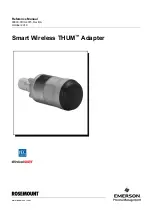
398 Using the FC-FC routing service
used to determine the Area_ID field of the PID) and the Port_ID field. Like the PIDs in a fabric, a proxy PID
must be unique. If the
slot
argument results in a duplicate PID, it will be ignored. Proxy PIDs are
automatically assigned to devices imported into a fabric, starting at f001. For Proxy IDs projected to an
M-EOS edge fabric in McDATA fabric mode, use valid ALPAs (lower 8 bits). See the
fcrProxyConfig
command in the
Fabric OS Command Reference
for more details.
Use the
fcrXlateConfig
command to display or assign a preferred domain ID to a translate domain.
See the
Fabric OS Command Reference
for more details about this command.
Fabric parameter considerations
By default, EX_Ports and VEX_Ports detect, autonegotiate, and configure the fabric parameters without user
intervention.
You can, as an option, configure these parameters manually. To change the fabric parameters on a switch
in the edge fabric, execute the
configure
command. To change the fabric parameters of an EX_Port on
the FC router, use the
portCfgEXPort
command. To change the fabric parameters of a VEX_Port, use the
portCfgVEXPort
command.
The backbone fabric PID mode and the edge fabric PID mode do not need to match, but the PID mode for
the EX_Port or VEX_Port and the edge fabric to which it is attached must match. You can statically set the
PID mode for the fabric by using the
-p
option with the
portCfgEXPort
command. Use the
-t
option to
disable the negotiate fabric parameter feature; otherwise, the PID mode is autonegotiated. The various
edge fabrics may have different PID modes.
Fabric parameter settings, namely, E_D_TOV (error-detect timeout value), R_A_TOV (resource-allocation
timeout value), and PID format, must be the same on EX_Ports or VEX_Ports and on the fabrics to which
they are connected. You can set the PID format on an EX_Port when you configure an interfabric link.
The default values for E_D_TOV and R_A_TOV for an EX_Port or VEX_Port must match those values on other
Fabric OS switches. Only if you have adjusted these parameters for the edge fabric do you need to adjust
them for an EX_Port or VEX_Port.
The default values for R_A_TOV and E_D_TOV are the recommended values for all but very large fabrics
(ones requiring four or more hops) or high-latency fabrics (such as ones using long-distance FCIP links).
Inter-fabric broadcast frames
The FC router can receive and forward broadcast frames between edge fabrics and between the
backbone fabric and edge fabrics. Many target devices and HBAs cannot handle broadcast frames. If
these devices are connected to switches with Fabric OS 5.3.0 or later, you can set up broadcast zones to
control which devices receive broadcast frames. (See ”
Broadcast zones
” on page 241 for information
about setting up broadcast zones.)
Broadcast zones are supported only on switches running Fabric OS 5.3.0 or later, so all devices that are
connected to switches running earlier firmware versions will receive broadcast frames.
By default, broadcast frames are forwarded from the FC router to all edge fabrics. You can specify which
fabrics should not receive the broadcast frames, thereby preventing the inter-fabric forwarding of broadcast
frames to switches running older versions of firmware.
For example, in the metaSAN shown in
Figure 67
on page 399, Fabric 1 is running a firmware release
earlier than 5.3.0. If the devices connected to this fabric do not support broadcast frames, you can disable
the forwarding of broadcast frames to Fabric 3.
Because all of the switches in Fabric 2 are running Fabric OS 5.3.0 or later, if some of the devices can
handle broadcast frames and some cannot, you can create a broadcast zone in this fabric to specify the
devices that can handle broadcast frames.
Fabric 3 has some switches that are running Fabric OS 5.3.0 and later, and some switches running older
firmware versions. In this case, a broadcast zone will not restrict broadcast frames to the devices that are
connected to the older switches. You need to decide whether to disable the forwarding of broadcast
frames to all the devices in the fabric (using
fcrbcastconfig
).
Содержание A7533A - Brocade 4Gb SAN Switch Base
Страница 1: ...HP StorageWorks Fabric OS 6 2 administrator guide Part number 5697 0016 Edition May 2009 ...
Страница 24: ...24 ...
Страница 99: ...Fabric OS 6 2 administrator guide 99 ...
Страница 100: ...100 Managing user accounts ...
Страница 118: ...116 Configuring standard security features ...
Страница 164: ...162 Configuring advanced security features ...
Страница 234: ...232 Installing and maintaining firmware ...
Страница 268: ...266 Administering advanced zoning ...
Страница 284: ...282 Configuring Enterprise class platforms ...
Страница 292: ...290 Routing traffic ...
Страница 294: ...292 Interoperability for merged SANs ...
Страница 302: ...300 Configuring the Distributed Management Server ...
Страница 334: ...332 iSCSI gateway service ...
Страница 340: ...338 Administering NPIV ...
Страница 407: ...Fabric OS 6 2 administrator guide 405 ...
Страница 408: ...406 Using the FC FC routing service ...
Страница 438: ...434 Administering extended fabrics ...
Страница 460: ...456 Administering ISL trunking ...
Страница 498: ...494 Configuring and monitoring FCIP extension services 556200 Bps 30s avg 491394 Bps lifetime avg ...
Страница 516: ...512 FICON fabrics ...
Страница 526: ...522 Configuring and monitoring FICON Extension Services ...
Страница 540: ...536 Configuring the PID format ...
Страница 544: ...540 Understanding legacy password behavior ...
Страница 546: ...542 Mixed fabric configurations for non merge SANs ...
Страница 550: ...546 Migrating from an MP Router to a 400 MP Router ...
Страница 558: ...554 Inband Management ...
Страница 572: ...568 ...
















































